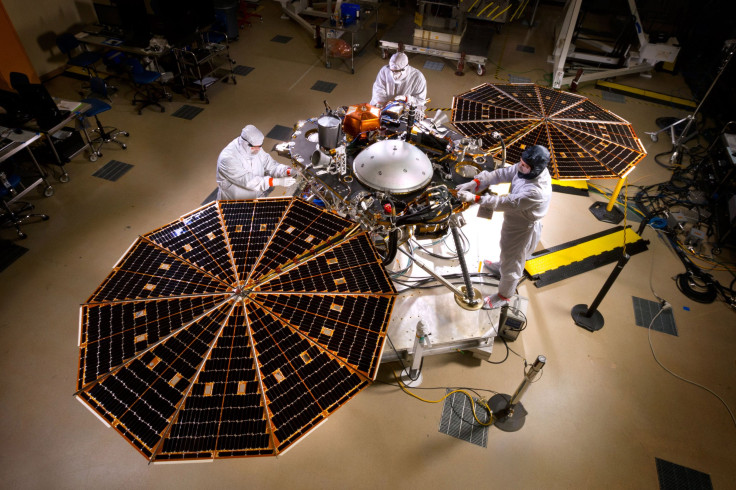NASA Eyes May 2018 Launch Window For InSight Mission To Mars

NASA’s InSight spacecraft, which was originally scheduled to take off for Mars this month, will now be launched in May 2018, the space agency announced Wednesday. NASA had postponed the launch of the robotic lander in December after unsuccessful attempts to repair a leak in a vacuum enclosure housing a key science instrument.
In a statement released Wednesday, the space agency said that it will redesign, build and test a new vacuum enclosure for the instrument, known as the Seismic Experiment for Interior Structure (SEIS). The instrument’s main sensors need to operate in near-perfect vacuum because it is sensitive enough to measure ground movements “as small as half the radius of a hydrogen atom,” NASA said.
“The rework of the seismometer's vacuum container will result in a finished, thoroughly tested instrument in 2017 that will maintain a high degree of vacuum around the sensors through rigors of launch, landing, deployment and a two-year prime mission on the surface of Mars,” NASA said in the statement.

The InSight mission — which stands for Interior Exploration using Seismic Investigations, Geodesy and Heat Transport — aims to understand how all rocky planets in our solar system, including Earth, formed and evolved. It is part of NASA’s ambitious Mars exploration program, which aims to eventually put humans on the red planet.
“Mars retains evidence about the rocky planets' early development that has been erased on Earth by internal churning Mars lacks. Gaining information about the core, mantle and crust of Mars is a high priority for planetary science, and InSight was built to accomplish this,” Bruce Banerdt, InSight principal investigator at NASA’s Jet Propulsion Laboratory in Pasadena, California, said in December.
The InSight spacecraft was built and tested by Lockheed Martin. Last month, the company shipped the spacecraft back from the launch site at Vandenberg Air Force Base in California to Denver, Colorado, where it will be kept in storage until preparations resume in 2017.
“The science goals of InSight are compelling,” John Grunsfeld, associate administrator for NASA’s Science Mission Directorate in Washington, said in the statement. “The quest to understand the interior of Mars has been a longstanding goal of planetary scientists for decades.”
© Copyright IBTimes 2024. All rights reserved.












